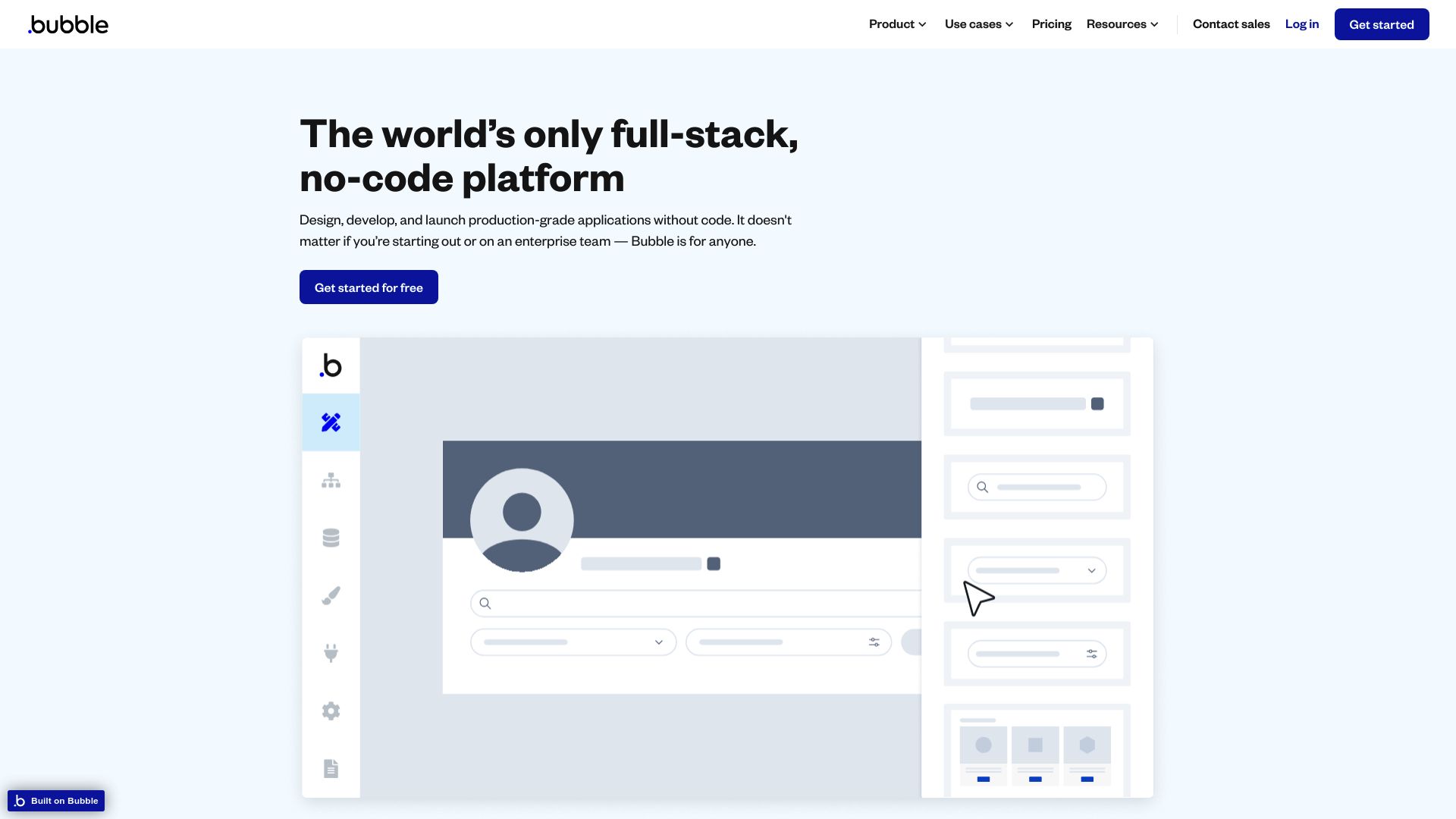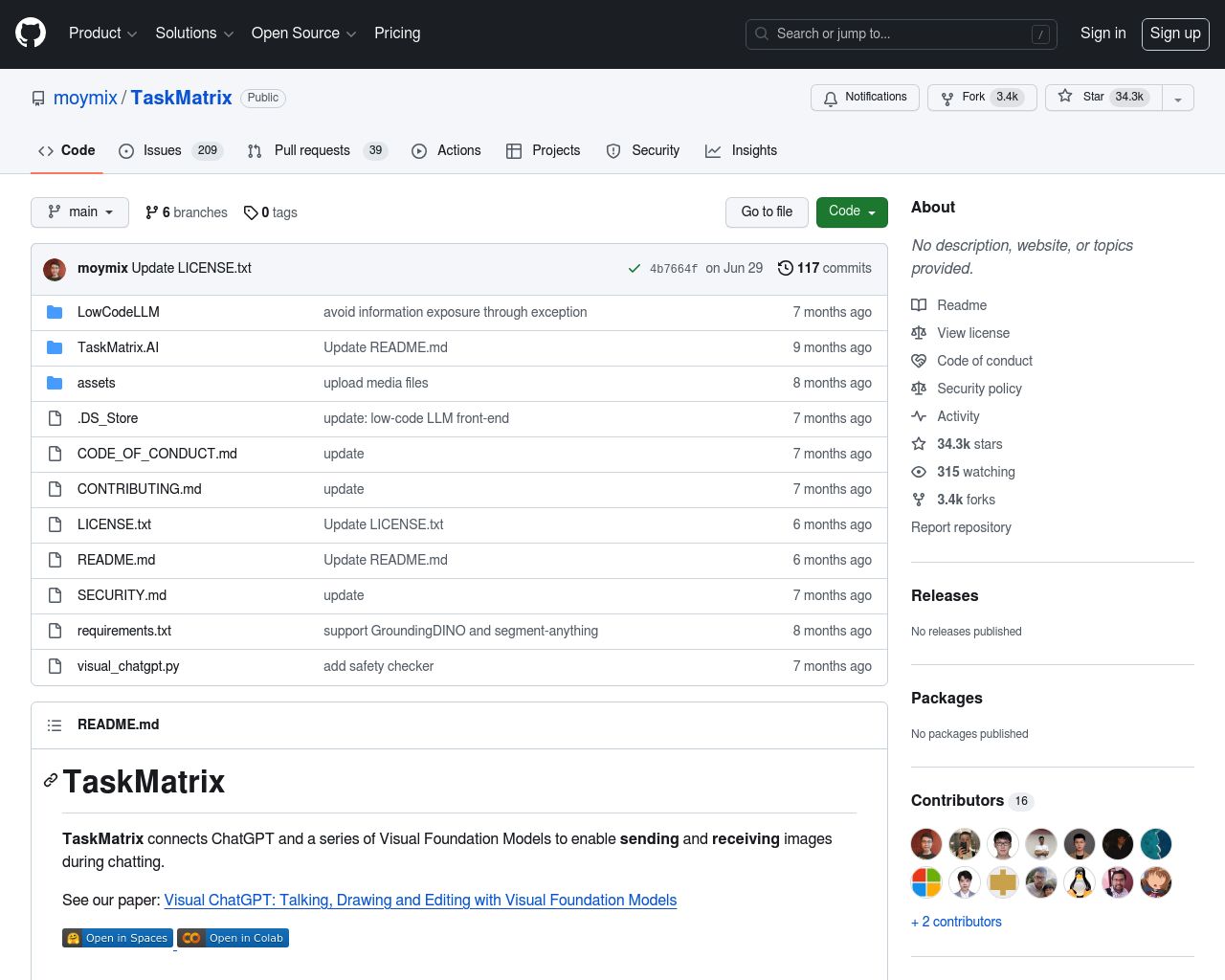Bubble vs. TaskMatrix: Which AI Platform Fits Your Needs?
AI-powered tools have revolutionized software development and task automation, empowering users to create sophisticated applications and workflows with unprecedented ease. This comparison explores three leading platforms in the AI space: Bubble vs. TaskMatrix, and SmythOS.
Each offers unique capabilities for building intelligent applications, from no-code solutions to advanced AI integrations. We’ll examine their core features, strengths, and limitations to help you determine which platform best suits your development needs. Whether you’re a non-technical entrepreneur, a seasoned developer, or an enterprise seeking to leverage AI, this analysis will guide you through the key considerations for choosing the right tool to bring your AI-driven projects to life.
Bubble Overview
Bubble empowers users to build web applications without coding. This visual development platform streamlines the creation of complex, database-driven apps through an intuitive drag-and-drop interface. Bubble caters to entrepreneurs, small businesses, and enterprises seeking to rapidly prototype and launch digital products.
The platform’s core strength lies in its no-code approach, allowing users to construct fully functional web applications visually. Bubble’s responsive design engine ensures applications adapt seamlessly across devices, while its workflow editor enables the creation of sophisticated business logic. The platform integrates with popular services and APIs, extending functionality to meet diverse project requirements.
Bubble empowers users to build web applications without coding. This visual development platform streamlines the creation of complex, database-driven apps through an intuitive drag-and-drop interface.


Bubble’s plugin ecosystem further enhances its capabilities, offering pre-built components and integrations with AI services like OpenAI’s GPT. This allows users to incorporate advanced features such as natural language processing and machine learning into their applications without deep technical expertise.
While Bubble excels in rapid application development, it faces limitations in certain areas. The platform’s performance can decrease with highly complex applications, and advanced customization sometimes requires workarounds. Additionally, migrating Bubble-built applications to other platforms can be challenging, potentially leading to vendor lock-in.
Despite these considerations, Bubble’s combination of visual development, extensive integrations, and scalable infrastructure positions it as a powerful tool for businesses and individuals looking to bring their digital ideas to life quickly and efficiently.
TaskMatrix Overview
TaskMatrix is an advanced AI-powered ecosystem developed by Microsoft. It enhances general-purpose foundation models like GPT-4 by integrating them with specialized models through APIs. TaskMatrix functions as a project manager, bridging diverse AI models to perform a wide range of tasks efficiently.
The system connects foundation models with specialized APIs, enabling the execution of tasks in both digital and physical realms. TaskMatrix understands user instructions, generates executable action codes, and performs tasks using appropriate APIs. Its core components include a conversational foundation model, a comprehensive API platform, an API selector, and an action executor.
TaskMatrix’s standout features include its ability to perform both digital and physical tasks, lifelong learning capabilities, and interpretable responses. The platform provides custom AI model creation, pretrained models, API connectors, and an extensive resource library for developers.
TaskMatrix functions as a project manager, bridging diverse AI models to perform a wide range of tasks efficiently.


While TaskMatrix offers powerful capabilities, it lacks some features found in other AI agent builders. It doesn’t provide hosted agents for development or production environments, and it doesn’t offer a visual builder or no-code editor. The platform also lacks specific features for explainability, transparency, and multi-agent collaboration.
TaskMatrix aims to create an AI ecosystem leveraging both foundation models and specialized APIs to accomplish complex tasks. This vision positions the platform as a tool for enhancing productivity and creativity across domains such as office automation, robotics, and IoT. However, its open-source nature may require more technical expertise to implement and integrate compared to some commercial alternatives.
Feature Comparison
Bubble and TaskMatrix offer distinct approaches to application development and AI integration. Bubble excels in visual, no-code web application building, while TaskMatrix focuses on connecting AI models through APIs for diverse task execution.
Bubble’s drag-and-drop interface enables rapid application development without coding, making it accessible to non-technical users. It provides both development and production environments, allowing for testing before deployment. Bubble integrates with AI services like OpenAI’s GPT through plugins and API connectors, enhancing applications with AI capabilities such as chatbots and content generation.
TaskMatrix, developed by Microsoft, takes a different approach. It functions as a project manager, bridging general-purpose foundation models like GPT-4 with specialized APIs. TaskMatrix understands user instructions, generates executable action codes, and performs tasks using appropriate APIs. Unlike Bubble, TaskMatrix lacks a visual builder or no-code editor, potentially requiring more technical expertise to implement.
In terms of core components, Bubble offers extensive integration capabilities with various APIs and services, including Zapier. It supports building complex logic within applications through workflows. TaskMatrix, on the other hand, provides a comprehensive API platform with consistent documentation for easy integration and use, as well as an API selector to choose the most relevant APIs for tasks.
Regarding security, Bubble uses TLS for data in transit and AES-256 encryption for data at rest. TaskMatrix’s security features are not explicitly detailed in the provided information. Both platforms support OAuth for authentication, but TaskMatrix’s approach to IP control is not specified.
While both platforms aim to enhance productivity and creativity, their focus differs. Bubble targets a wide range of users, from non-technical individuals to businesses, for web application development. TaskMatrix aims to create an AI ecosystem leveraging both foundation models and specialized APIs for complex task execution across domains like office automation, robotics, and IoT.
TaskMatrix’s ability to perform both digital and physical tasks and its lifelong learning capabilities set it apart. However, Bubble’s user-friendly interface and extensive plugin ecosystem make it more accessible for rapid application development and AI integration without deep technical expertise.
Feature Comparison Table
| Bubble | TaskMatrix | SmythOS | |
|---|---|---|---|
| CORE FEATURES | |||
| Memory & Context | ❌ | ✅ | ✅ |
| Autonomous Agents | ❌ | ✅ | ✅ |
| Explainability & Transparency | ❌ | ✅ | ✅ |
| Multimodal | ❌ | ✅ | ✅ |
| Multi-Agent Collaboration | ❌ | ✅ | ✅ |
| Bulk Work | ❌ | ✅ | ✅ |
| Agent Work Scheduler | ❌ | ✅ | ✅ |
| SECURITY | |||
| Constrained Alignment | ❌ | ✅ | ✅ |
| IP Control | ❌ | ✅ | ✅ |
| COMPONENTS | |||
| Huggingface AIs | ❌ | ✅ | ✅ |
| Classifiers | ❌ | ✅ | ✅ |
| Data Lakes | ✅ | ❌ | ✅ |
| DEPLOYMENT OPTIONS (EMBODIMENTS) | |||
| Deploy as API | ❌ | ✅ | ✅ |
| Deploy as Scheduled Agent | ❌ | ✅ | ✅ |
| DATA LAKE SUPPORT | |||
| Hosted Vector Database | ❌ | ❌ | ✅ |
| Sitemap Crawler | ❌ | ❌ | ✅ |
| YouTube Transcript Crawler | ❌ | ❌ | ✅ |
| URL Crawler | ❌ | ✅ | ✅ |
Best Alternative to Bubble and TaskMatrix
SmythOS stands out as the superior alternative to Bubble and TaskMatrix, offering a comprehensive platform for AI agent development and deployment. Our solution combines the best of both worlds: the visual, no-code approach of Bubble and the advanced AI capabilities of TaskMatrix, while surpassing both in key areas.
We provide an intuitive drag-and-drop interface that makes AI agent creation accessible to users of all skill levels. Unlike Bubble, which focuses primarily on web application development, SmythOS specializes in AI agent building, offering a more targeted and powerful solution for businesses looking to leverage artificial intelligence.
SmythOS stands out as the superior alternative to Bubble and TaskMatrix, offering a comprehensive platform for AI agent development and deployment.
Our platform excels in its extensive integration capabilities, supporting a wide range of AI models, APIs, and data sources. While TaskMatrix connects foundation models with specialized APIs, SmythOS goes further by offering a vast ecosystem of pre-built components and templates, significantly reducing development time and complexity. This allows users to create sophisticated AI agents without the need for deep technical expertise in AI or programming.
SmythOS sets itself apart with its robust multi-agent collaboration features and advanced scheduling capabilities. Our Agent Work Scheduler allows for intelligent, automated task execution, surpassing the functionality offered by both Bubble and TaskMatrix. Additionally, our platform provides unparalleled scalability and deployment options, enabling users to easily adapt their AI solutions as their needs grow and change.
With SmythOS, we’ve created a platform that not only matches but exceeds the capabilities of Bubble and TaskMatrix in ease of use, feature set, and versatility. Our solution empowers businesses to harness the full potential of AI, driving innovation and efficiency across a limitless range of use cases.
Conclusion
Bubble, TaskMatrix, and SmythOS each offer unique approaches to application development and AI integration. Bubble excels in visual, no-code web application building, making it accessible to non-technical users. TaskMatrix, developed by Microsoft, focuses on connecting AI models through APIs for diverse task execution. However, SmythOS emerges as the superior choice, combining the best of both worlds and offering additional advantages.
SmythOS stands out with its comprehensive feature set, including a user-friendly drag-and-drop interface, extensive API integrations, and support for various AI models. Unlike Bubble, which primarily focuses on web applications, SmythOS enables the creation of versatile AI agents that can be deployed across multiple platforms. This flexibility surpasses TaskMatrix’s capabilities, allowing for more diverse and scalable solutions.
The platform’s ability to support multi-agent collaboration, provide detailed explainability, and offer robust debugging tools sets it apart from both Bubble and TaskMatrix. SmythOS also excels in security and scalability, making it suitable for enterprise-level deployments while remaining accessible to smaller teams and individual developers.
For those looking to harness the power of AI in their projects, SmythOS offers an unparalleled combination of ease-of-use and advanced capabilities. Whether you’re building chatbots, APIs, or complex AI workflows, SmythOS provides the tools and flexibility to bring your ideas to life. Explore our diverse range of AI-powered agent templates to jumpstart your projects and see firsthand how SmythOS can transform your approach to AI development and integration.
Last updated:
Disclaimer: The information presented in this article is for general informational purposes only and is provided as is. While we strive to keep the content up-to-date and accurate, we make no representations or warranties of any kind, express or implied, about the completeness, accuracy, reliability, suitability, or availability of the information contained in this article.
Any reliance you place on such information is strictly at your own risk. We reserve the right to make additions, deletions, or modifications to the contents of this article at any time without prior notice.
In no event will we be liable for any loss or damage including without limitation, indirect or consequential loss or damage, or any loss or damage whatsoever arising from loss of data, profits, or any other loss not specified herein arising out of, or in connection with, the use of this article.
Despite our best efforts, this article may contain oversights, errors, or omissions. If you notice any inaccuracies or have concerns about the content, please report them through our content feedback form. Your input helps us maintain the quality and reliability of our information.
